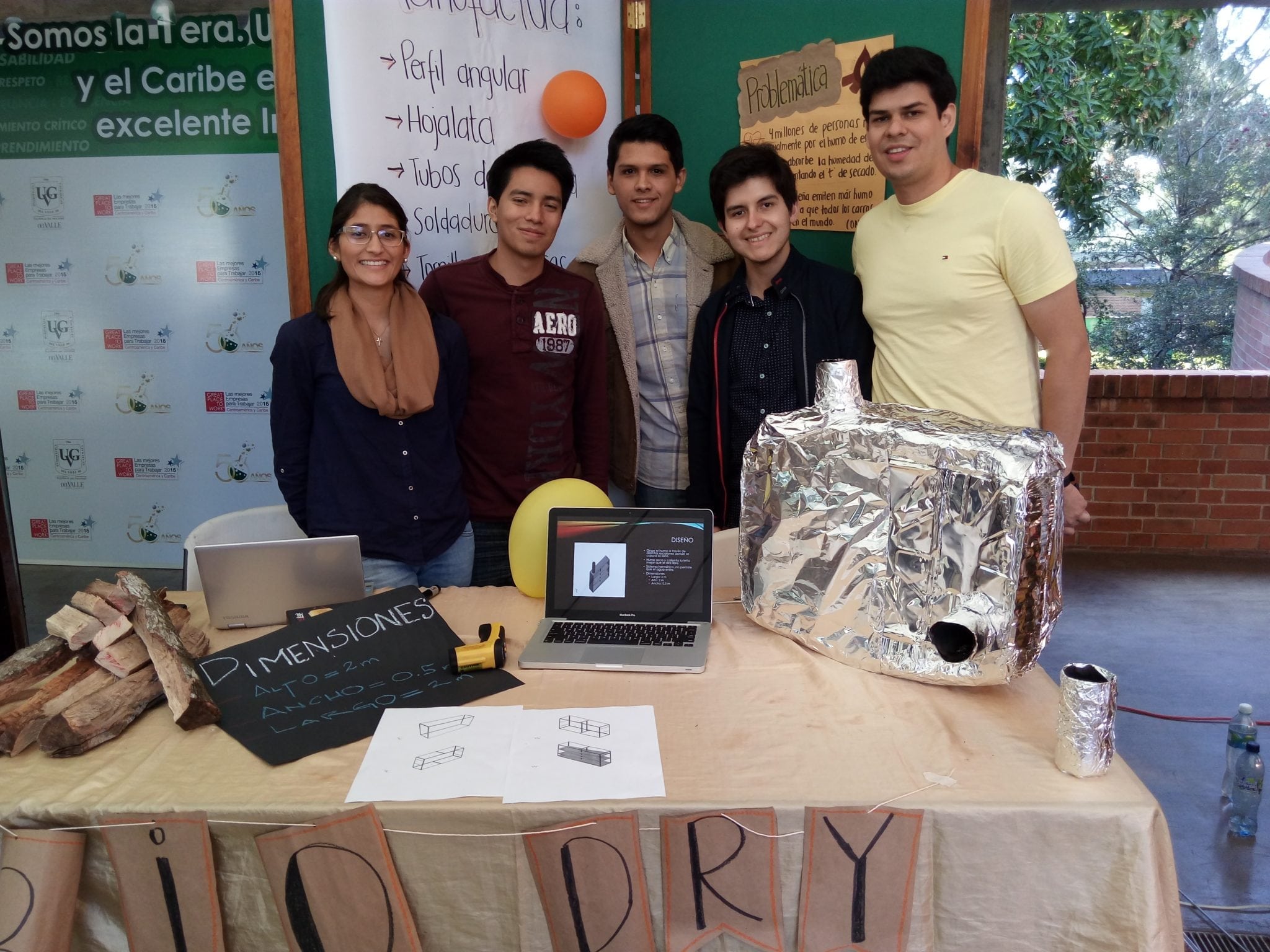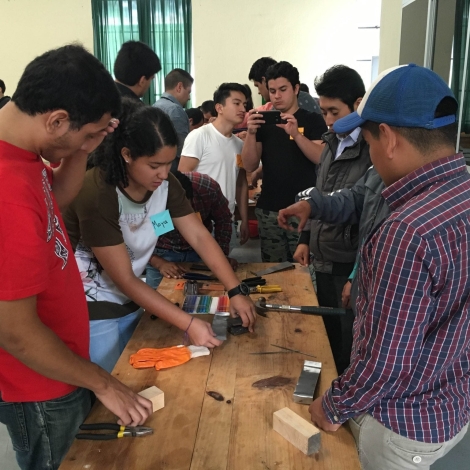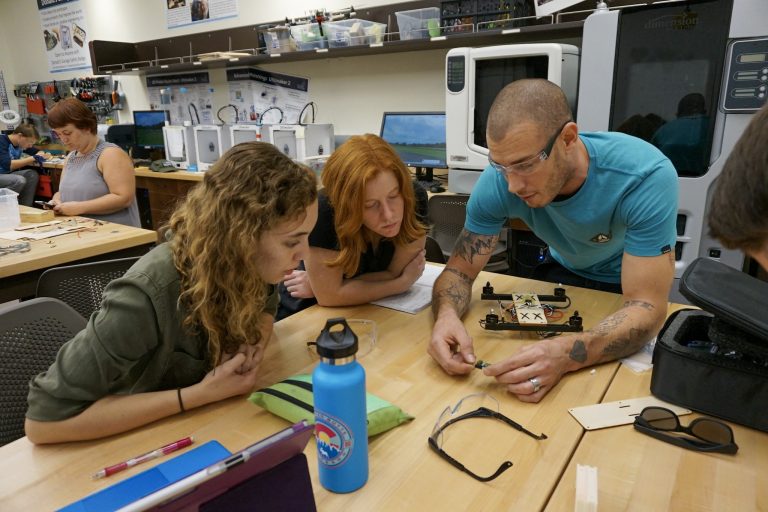The differences that persist worldwide between the city and the country are stark in Guatemala. Residents of the country’s capital, Guatemala City, can live in conditions similar or even better than those of any city in the developed world, while mountain and jungle villages may lack adequate water, sanitation and electricity.
Student engineers at the Universidad del Valle de Guatemala (UVG) in the capital have begun to study the problems endemic in the country. We asked Victor Hugo Ayerdi Bardales, UVG’s Director of Mechanical Engineering, for a glimpse inside rural engineering in this Central American country.

Students at UVG show their prototype wood drier that they built in the “Design and Innovation for Development” course. Photo courtesy of Victor Hugo Ayerdi
E4C: How is design and engineering for global development carried out in your region now?
Victor Hugo Ayerdi: In Guatemala, the Mechanical Engineering Department at UVG started an introduction to innovation for development course with the support of International Development Innovation Network (IDIN) members and MIT D-Lab. During 2016, 45 engineering students from UVG enrolled in the course, “Design and Innovation for Development,” based on D-Lab: Design.
The students now have a better understanding of the needs of the communities in our country, and they are looking for opportunities to apply their knowledge to solve local problems.
Now in 2017 UVG and a local organization called Link 4 are working together to organize the International Development Design Summit (IDDS) “Sustainable Homes.” The summit is going to be held on UVG’s Campus Altiplano in Sololá, Guatemala, in June 2017. During this summit, 50 participants (34 local and 16 from abroad) will be taught in the co-creation methodologies developed by MIT D-Lab and IDIN. Finally, several development projects are underway with the participation of engineering students.
All of this has helped to sensitize our students. They have now a better understanding of the needs of the communities in our country, and also are looking for opportunities in which they can apply their knowledge to solve local problems.
E4C: How do local and foreign students differ in their approaches to design for development?
VHA: In 2016 and 2017, only local students from Guatemala City have been taking the “Design and Innovation for Development” course. We are preparing an option for summer school starting in June 2018 where this course will be opened to foreign and local students. We have talked with universities from developed countries, and for them, it would be good if their students could come to Guatemala to see the context and the problems.
Definitely, it is easier for our local students to see and understand the needs of our communities because they know more about our context. But also, the course is very helpful in this aspect for them, since the context and needs of the people in Guatemala City are different from that of the rural communities. We are planning to have this summer school in our campus in Sololá (nearby a lot of the communities where we work), so it will be an excellent multicultural experience for the participants.
The course is helpful to the local student engineers, since the context and needs of the people in Guatemala City are different from that of the rural communities.
Last year, when the course was taught for the first time, we made two visits to communities in Sololá. We would have liked to make more visits. As the course moved ahead, students were asking for that since they understood the importance of knowing the needs of the customer. That was one of the best results of the course. They knew they couldn´t design well without this. Unfortunately, since Sololá is three hours from our campus, and due to budget restrictions, we could only visit two times.
During the second visit, the students validated their ideas about their designs, and they also discovered that some ideas didn´t work. These are the reasons why we are thinking of doing the summer school in the UVG Campus Altiplano in Sololá. Near the communities, the results of the course can improve both the education and the quality of the of prototypes.
On other hand, during the summit we will have this year, we have participants from abroad, from rural communities and from Guatemala in general. The summit, IDDS, is part of the curriculum linked to the IDIN (the network). I think the summer school will implement many of the principles explored at the IDDS. IDDS is more open to many kinds of participants (students, professionals, community members).

